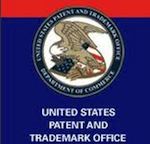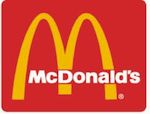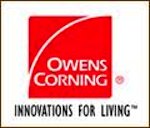Protect Your Brand: Trademark Essentials for Healthcare and Hospital Marketing
Guest Post by Healthcare Attorney Stephen H. Kaufman
 Whether you are starting a new medical practice, operating a long-established business, or actively engaged in hospital advertising, you probably have a trademark—a name, a phrase or a design that brands your business in the marketplace.
Whether you are starting a new medical practice, operating a long-established business, or actively engaged in hospital advertising, you probably have a trademark—a name, a phrase or a design that brands your business in the marketplace.
You can establish rights in your marks just by using them in commerce, including medical practice advertising or hospital marketing. However, if you want to more definitively prevent others from trading on your hard-earned goodwill, you may be able to register your business name, logo or catchphrase (or tagline) with the government so that others cannot use them. Here are some fundamentals.



Besides a name, symbol or logo, a trademark can be a phrase, device, color, sound or scent. Some well-known examples from the retail world are McDonald’s Golden Arches, Owens Corning’s phrase “Innovations for Living,” and the color pink for fiberglass insulation.
There are five categories of marks, each of which has a different level of legal protection. From least to most protected, they are:
- GENERIC: Names like “cleaning services” or “doctors” – these cannot be trademarked.
- DESCRIPTIVE: These tell something about the service or product directly but can be protected if they have acquired distinctiveness, often through geography (“Valley Pediatrics,”) or a surname (“Jones Orthopaedics”).
- SUGGESTIVE: These tell something about the goods and services indirectly, like “Ever Ready” or “Top Job.”
- ARBITRARY: These names, like “Apple” or “Amazon,” have no connection between the mark and the service or product. They enjoy strong protection.
- FANCIFUL: These are made-up words, like “Xerox,” “Google” or “Viagra,” invented to identify goods or services. They are the most strongly protected.
Protecting trademarks through registration is a process that often takes six to 12 months to complete, so start early.
First, determine the name, logo or other marks you want to protect. This is where healthcare marketing pros help. When choosing marks, the more you move down the list of trademark types toward “arbitrary,” the better your chance of protection.
Once you have a proposed mark, you will need to identify categories in which it will be protected. For example, “York” can be used by different businesses for different things.
YORK (registered for YORK Peppermint Patties or registered for HVAC products)
A lawyer can provide the category list and help you choose the proper ones for your business.
After you choose your marks, a search of existing marks must be done to see if your choice is already taken. If your mark is available, the next step is to file an application for registration with the U.S. Patent and Trademark Office.
You cannot use the symbol “®” until the mark is approved by the government. Before that, you can use “TM” (trademark—used for goods) or “SM” (for “service mark,” which is essentially a trademark that identifies the source of services).
Once marks are registered, methods are available for monitoring and preventing their use by others. If your mark is used without your permission, you can demand that the use stop, and if it doesn’t, you can ask a court to help. Willful infringement of another’s registered mark can lead to monetary penalties.
Steve Kaufman is a lawyer who represents physicians and others in the healthcare industry on all aspects of their businesses. Steve can be reached at [email protected].
Related Articles:
Your Brand Isn't What You Say - It Is Who You Are.
Little Places Your Healthcare Brand Can Let You Down Big Time
Healthcare Branding Misconception: \The Community Already Knows Us!\











